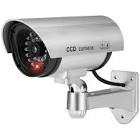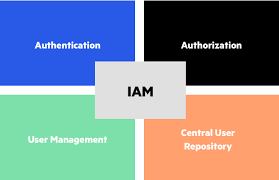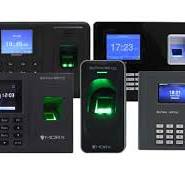Single Camera CCTV: A Cost-Effective Solution for Enhanced Security
In today’s fast-paced world, security is a top priority for individuals and businesses alike. Whether it’s protecting your home, office, or any other property, having a reliable surveillance system is crucial. One popular option that offers both affordability and effectiveness is the single camera CCTV system.
A single camera CCTV setup consists of a single camera connected to a recording device or monitor. While it may seem simple compared to multi-camera systems, it still provides valuable surveillance capabilities. Here are some key advantages of opting for a single camera CCTV solution:
- Cost-Effective: For those on a budget or with limited security needs, a single camera CCTV system offers an affordable solution. It requires fewer components and installation costs compared to more complex setups with multiple cameras.
- Easy Installation: Setting up a single camera CCTV system is relatively straightforward and can be done by anyone with basic technical knowledge. With fewer cables and connections to manage, the installation process becomes hassle-free.
- Versatility: Single camera CCTV systems can be used in various settings, such as homes, small businesses, retail stores, or even outdoor areas like parking lots or gardens. Their compact size and flexibility make them suitable for both indoor and outdoor surveillance requirements.
- Monitoring Specific Areas: While multi-camera setups provide extensive coverage, sometimes you only need to monitor specific areas of interest. A single camera can be strategically placed to focus on critical points like entrances, high-value assets, or vulnerable spots within your property.
- Deterrence Factor: Even the presence of a single camera can act as a deterrent against potential intruders or criminal activities. The sight of a visible surveillance system often discourages individuals from engaging in unlawful behavior.
- Remote Monitoring: Many modern single camera CCTV systems offer remote monitoring capabilities through mobile apps or web interfaces. This allows users to access live feeds and recorded footage from anywhere, providing peace of mind and the ability to respond promptly to any suspicious activities.
- Scalability: Single camera CCTV systems can be easily expanded or upgraded in the future if your security needs evolve. This scalability ensures that your investment remains relevant as your requirements change over time.
While single camera CCTV systems have numerous advantages, it’s important to note their limitations. They may not provide comprehensive coverage compared to multi-camera setups, and blind spots may exist depending on the camera’s field of view. However, by strategically positioning the camera and considering its capabilities, these limitations can be minimized.
In conclusion, a single camera CCTV system offers an affordable and practical solution for enhancing security in various settings. Whether you’re a homeowner looking to protect your property or a small business owner aiming to safeguard your assets, a single camera CCTV setup can provide valuable surveillance capabilities without breaking the bank. Remember to choose a reliable brand and consult with professionals for optimal placement and installation. Prioritizing security is essential in today’s world, and a single camera CCTV system can be an effective tool in achieving that goal.
Frequently Asked Questions About Single Camera CCTV Systems
- How many areas can a single camera CCTV system cover?
- Can I view the live footage and recorded videos remotely using a single camera CCTV system?
- What is the ideal location to install a single camera for maximum coverage?
- Can a single camera CCTV system be used both indoors and outdoors?
- What are the key features to look for when choosing a single camera CCTV system?
- Is it possible to expand or upgrade a single camera CCTV system in the future if needed?
How many areas can a single camera CCTV system cover?
The coverage area of a single camera CCTV system can vary depending on several factors, including the camera’s field of view (FOV) and the positioning of the camera. The FOV is determined by the lens type and focal length of the camera.
Generally, a single camera CCTV system can cover a specific area or zone effectively. The exact coverage area depends on the camera’s specifications, such as its angle of view and zoom capabilities.
For example, a wide-angle lens with a larger FOV can cover a broader area, while a narrow-angle lens with a smaller FOV can focus on a more specific region in greater detail. It’s important to consider factors like distance, lighting conditions, and any potential obstructions that may affect the camera’s coverage.
To maximize coverage with a single camera CCTV system, strategic placement is key. By positioning the camera at an optimal height and angle, you can increase its coverage area and minimize blind spots. Additionally, using pan-tilt-zoom (PTZ) cameras or motorized mounts allows for remote adjustment and monitoring of different areas within the camera’s range.
It’s worth noting that while single-camera systems offer valuable surveillance capabilities, they may not provide comprehensive coverage across large areas or multiple angles simultaneously. In such cases, multi-camera setups are more suitable for achieving extensive coverage.
To determine the specific coverage area of a single camera CCTV system for your needs, it is recommended to consult with security professionals or refer to the manufacturer’s specifications for detailed information about the camera’s FOV and capabilities.
Can I view the live footage and recorded videos remotely using a single camera CCTV system?
Yes, many modern single camera CCTV systems offer the capability to view live footage and access recorded videos remotely. This is typically achieved through mobile apps or web interfaces provided by the CCTV system manufacturer. By connecting your single camera CCTV system to the internet and setting up the necessary configurations, you can securely access your surveillance system from anywhere using a smartphone, tablet, or computer.
Remote monitoring allows you to keep an eye on your property in real-time, no matter where you are. You can view live video feeds from your single camera and monitor activities as they happen. Additionally, most systems provide options for recording and storing footage. You can access recorded videos remotely, enabling you to review past events or incidents whenever needed.
It’s important to ensure that your single camera CCTV system supports remote viewing capabilities before making a purchase. Check for compatibility with mobile apps or web interfaces that allow remote access. Also, make sure to follow proper security measures such as using strong passwords and enabling encryption to protect your surveillance system from unauthorized access.
By leveraging the remote monitoring features of a single camera CCTV system, you can enhance security and have peace of mind knowing that you can always keep an eye on your property, even when you’re away.
What is the ideal location to install a single camera for maximum coverage?
When determining the ideal location to install a single camera for maximum coverage, several factors need to be considered. Here are some key points to keep in mind:
- Entry Points: One of the most important areas to cover is the main entry point, such as doors or gates. Install the camera in a position that provides a clear view of anyone entering or exiting the premises.
- High-Value Assets: Identify any high-value assets or areas that require extra protection, such as safes, storage rooms, or display cases. Position the camera in a way that covers these specific areas effectively.
- Vulnerable Areas: Assess your property for any vulnerable spots where unauthorized access could occur, such as windows, back entrances, or blind corners. Install the camera in locations that provide visibility and deter potential intruders.
- Wide Field of View: Choose a location that offers a wide field of view to capture as much area as possible. This could be an elevated position or a corner where multiple angles converge.
- Lighting Conditions: Consider lighting conditions when selecting the installation spot. Ensure that the camera is not affected by strong backlighting or glare, which can compromise image quality and visibility.
- Obstructions and Blind Spots: Take note of any obstructions like trees, pillars, or walls that may obstruct the camera’s view or create blind spots. Adjust the camera’s position accordingly to minimize potential coverage gaps.
- Height and Angle: Mounting height plays a crucial role in maximizing coverage. Position the camera at an optimal height to capture faces and activities clearly while avoiding tampering or vandalism attempts.
- Wiring and Power Accessibility: Ensure that the chosen location allows for easy wiring connections and access to power sources without compromising security measures.
- Legal Considerations: Familiarize yourself with local laws and regulations regarding surveillance cameras’ placement and privacy concerns to ensure compliance.
- Consult Professionals: If you are unsure about the best installation location, it’s advisable to consult with security professionals or technicians who can provide expert guidance based on your specific requirements.
Remember, the ideal location for a single camera may vary depending on the unique layout and needs of each property. By considering these factors and seeking professional advice if needed, you can install the camera in a position that maximizes coverage and enhances security effectively.
Can a single camera CCTV system be used both indoors and outdoors?
Yes, a single camera CCTV system can be used both indoors and outdoors. While some cameras are specifically designed for indoor or outdoor use, there are versatile models available that can function effectively in both environments.
When selecting a single camera for your CCTV system, it’s important to consider its IP (Ingress Protection) rating. The IP rating indicates the camera’s resistance to dust and water. For outdoor use, it is recommended to choose a camera with a higher IP rating to withstand weather conditions such as rain, snow, and extreme temperatures.
Indoor cameras are typically designed to be more compact and blend seamlessly with the surroundings. They may not require the same level of protection against environmental factors as outdoor cameras do.
It’s worth noting that when using a single camera for both indoor and outdoor surveillance, you need to ensure that it has the necessary features to adapt to different lighting conditions. Some cameras come with built-in infrared LEDs for night vision capabilities, which is essential for capturing clear footage in low-light or dark environments.
Additionally, consider factors like camera placement and mounting options when installing a single camera CCTV system. Indoors, you may have more flexibility in terms of mounting locations, while outdoors you may need to consider weatherproof housing or protective enclosures.
Overall, by selecting the right type of camera with appropriate features and considering environmental factors, a single camera CCTV system can effectively monitor both indoor and outdoor areas.
What are the key features to look for when choosing a single camera CCTV system?
When choosing a single camera CCTV system, there are several key features to consider to ensure you select the right system for your needs. These features will help determine the effectiveness and reliability of your surveillance setup. Here are some important factors to look for:
- Image Quality: Opt for a camera with high-resolution capabilities, preferably at least 1080p or higher. This ensures clear and detailed footage, allowing you to easily identify people or objects in the recorded video.
- Night Vision: Look for a camera with good low-light performance or infrared (IR) capabilities. This feature enables the camera to capture clear images even in low-light conditions or complete darkness.
- Wide Dynamic Range (WDR): WDR technology helps balance out uneven lighting conditions, such as bright sunlight or shadows, within the camera’s field of view. This ensures that details are visible in both bright and dark areas of the scene.
- Field of View (FOV): Consider the camera’s field of view and choose one that suits your surveillance requirements. A wider FOV allows for greater coverage, while a narrower FOV can focus on specific areas with more detail.
- Pan-Tilt-Zoom (PTZ) Functionality: If you require the ability to remotely adjust the camera’s viewing angle or zoom in on specific areas, consider a PTZ camera that offers pan, tilt, and zoom capabilities.
- Motion Detection: Look for cameras with built-in motion detection technology that can trigger recording or send alerts when movement is detected within its range. This feature helps conserve storage space and ensures you are notified of any potential security breaches.
- Remote Access: Ensure that the CCTV system offers remote access through mobile apps or web interfaces so you can monitor live feeds and access recorded footage from anywhere using your smartphone, tablet, or computer.
- Storage Capacity: Consider whether the system has sufficient storage capacity for storing recorded footage. Look for options that support local storage via SD cards or external hard drives, or those that offer cloud storage solutions.
- Weather Resistance: If you plan to use the camera outdoors, ensure it is designed to withstand various weather conditions. Look for cameras with an IP65 or higher rating, indicating resistance to dust and water.
- Ease of Installation and Use: Consider the installation process and whether it aligns with your technical capabilities. Look for systems that come with user-friendly interfaces and clear instructions for easy setup and operation.
- Brand Reputation and Support: Research reputable brands known for their quality CCTV systems and reliable customer support. Read reviews and seek recommendations to ensure you choose a trusted brand that offers good after-sales service.
By considering these key features, you can select a single camera CCTV system that meets your specific surveillance needs, providing you with peace of mind and enhanced security.
Is it possible to expand or upgrade a single camera CCTV system in the future if needed?
Yes, it is possible to expand or upgrade a single camera CCTV system in the future if needed. While a single camera setup may initially meet your security requirements, as your needs evolve or your property expands, you may find the need for additional cameras or advanced features.
Expanding a single camera CCTV system typically involves adding more cameras to cover additional areas or angles that require surveillance. This can be done by connecting new cameras to the existing recording device or monitor. Depending on the specific system you have, you may need to ensure compatibility between the new and existing components.
Upgrading a single camera CCTV system involves replacing the existing camera with a more advanced model that offers enhanced features such as higher resolution, wider field of view, night vision capabilities, or remote access options. This allows you to take advantage of newer technologies and improve the overall effectiveness of your surveillance system.
When planning to expand or upgrade your single camera CCTV system, it is advisable to consult with professionals who specialize in security systems. They can assess your specific needs and recommend suitable options for expansion or upgrading based on factors like budget, desired coverage area, and technical compatibility.
It’s important to note that while expanding or upgrading a single camera CCTV system is possible, there may be limitations depending on the specific brand and model you have chosen. Therefore, it’s always recommended to choose a reliable and reputable brand that offers flexibility for future expansion and upgrades.
By considering scalability during the initial installation of your single camera CCTV system and consulting experts when needed, you can ensure that your surveillance solution remains adaptable and effective as your security needs change over time.




